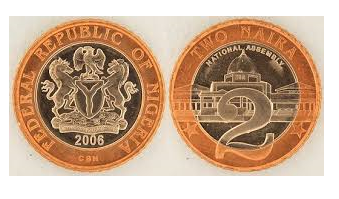Security Features
The Naira banknotes and coins are protected by a number of security features to enable the easy recognition of genuine notes.
The distinguishing features which can be recognized by touch and visibility are the raised print, the security thread and the watermark.
Other areas such as the portrait, lettering and the denominational numerals on the obverse and reverse of the notes are embossed.
The raised prints provide the tactility, while the security thread, which ordinarily, looks broken but is not when held up against light, has "CBN" in small lettering printed on both sides of the notes.
The Naira banknotes also have anti-scan/anti-photocopy features which include:
- The electrotype watermark on the ₦1000, ₦500, ₦200 and ₦100
- Gold/Silver patches on the ₦500, ₦200 banknotes (with an embossed outline of Nigeria’s coat of arms)
- Special inks which illuminate in bright, altered colours when subjected to ultra-violet (UV) light.
The currency banknotes issued in Nigeria are in: ₦5, ₦10, ₦20, ₦50, ₦100, ₦200, ₦500 and ₦1000 denominations. The lower denominations ( ₦5, ₦10, ₦20, and ₦50) are printed on polymer substrate and are 130 X 72 mm in size, while the higher denominations ( ₦100, ₦200, ₦500 and ₦1000) are printed on paper substrate and are 151 X 78 mm in size. The paper and polymer substrates have specific constituents unique to banknotes. The printing process and the materials used provide the currency banknotes with distinctive qualities necessary to give the banknotes a long lifespan in circulation. At the same time, these special features give a distinctive appearance and feel, which are meant to protect the banknotes from counterfeiting.
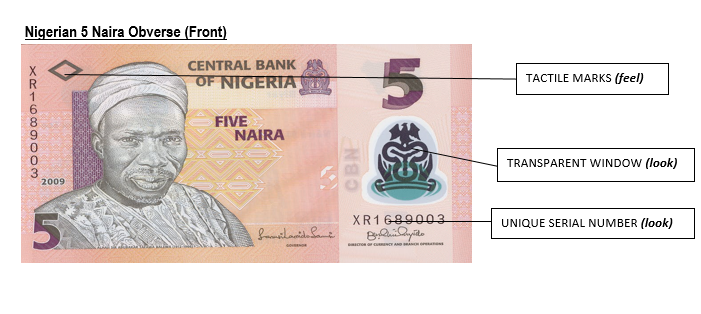
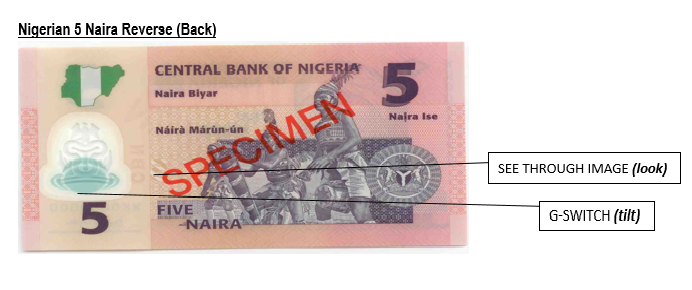
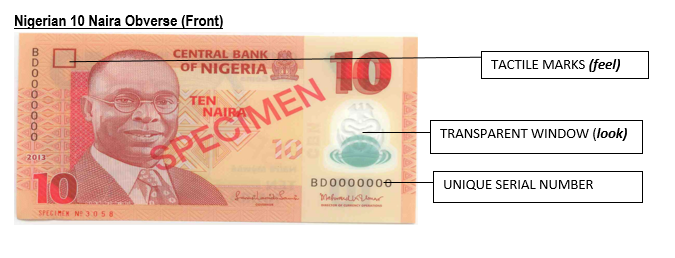
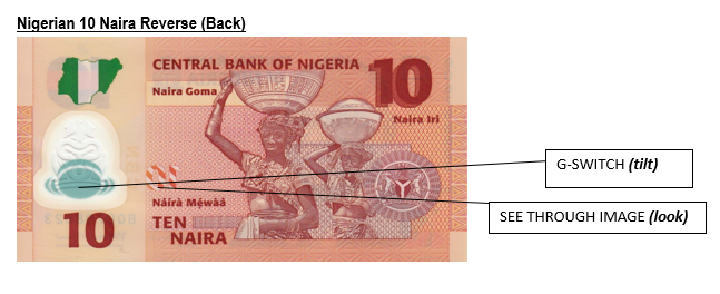
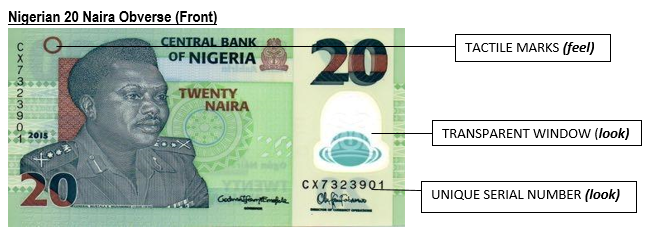
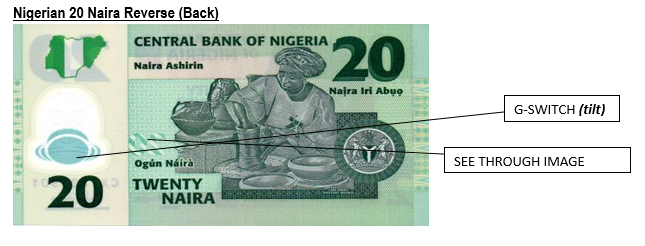
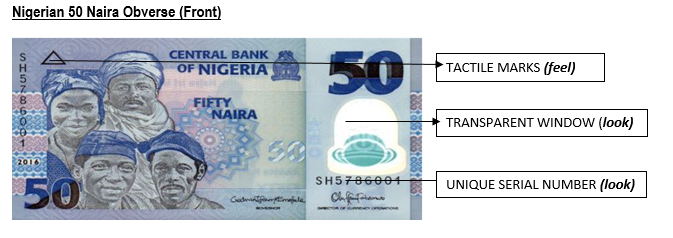
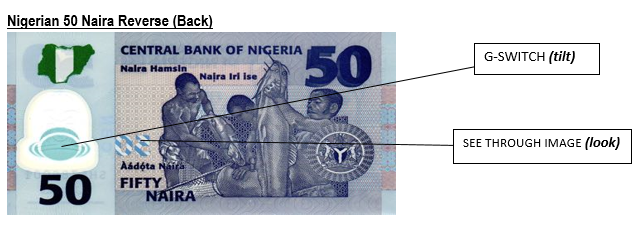
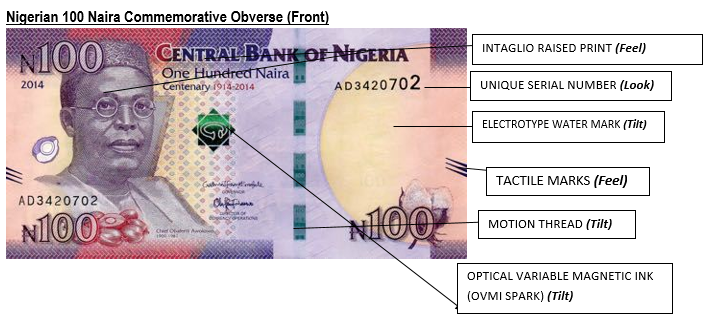
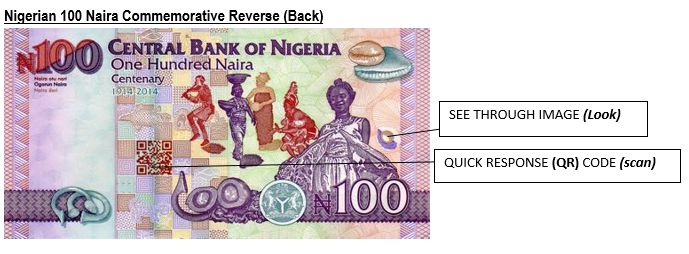
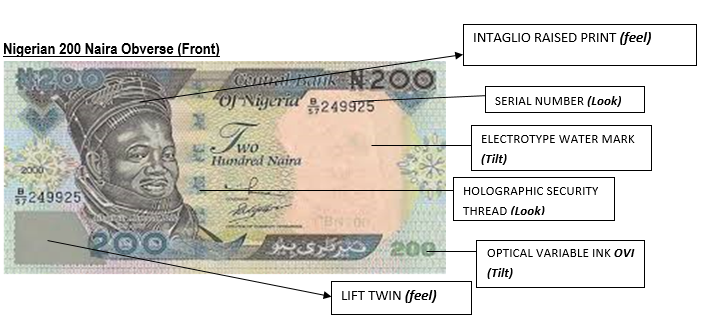
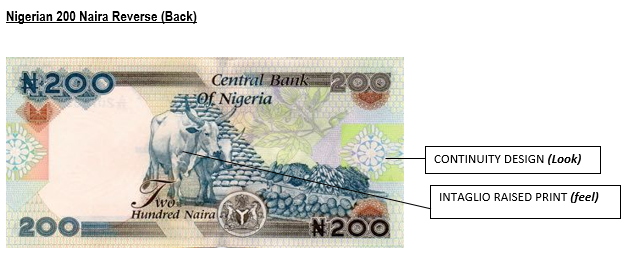
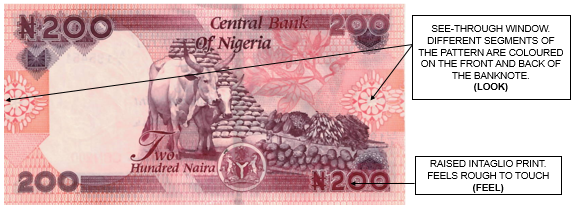
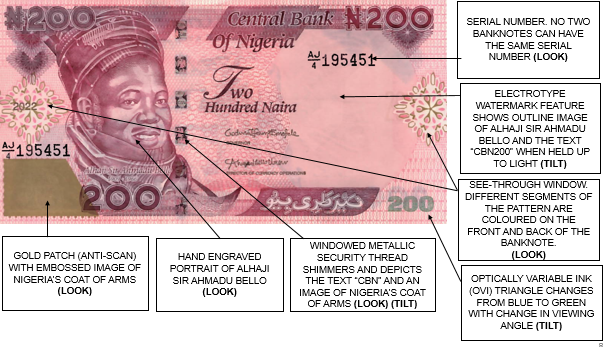
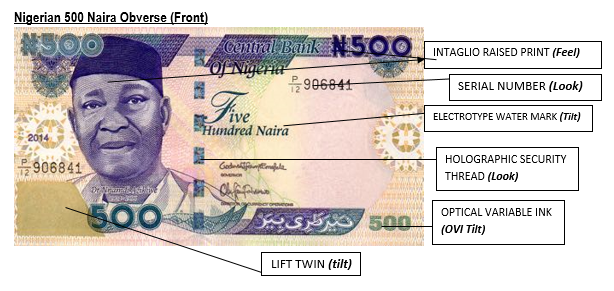
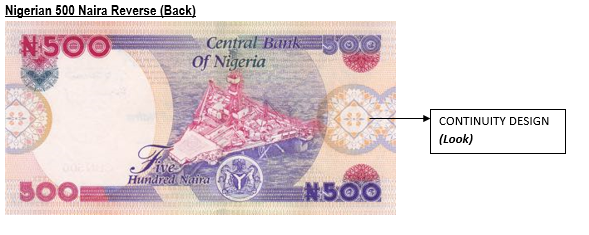
Redesigned 500 Naira Reversed (Back)
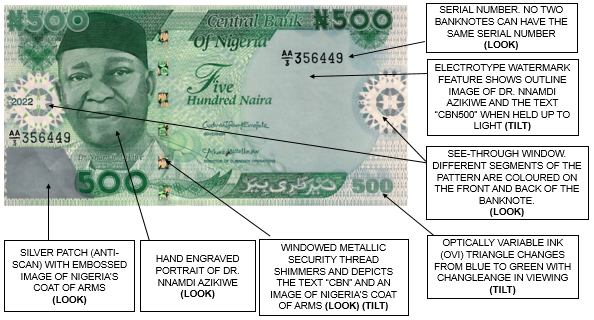
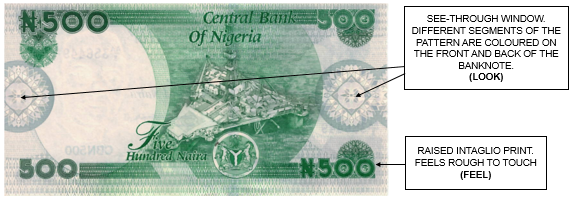
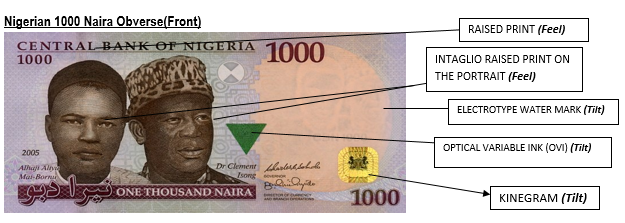
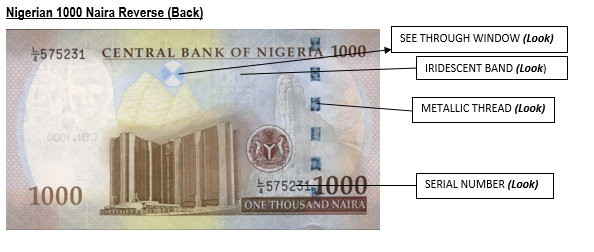
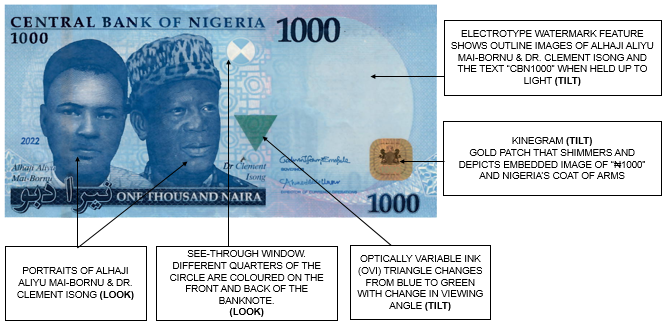
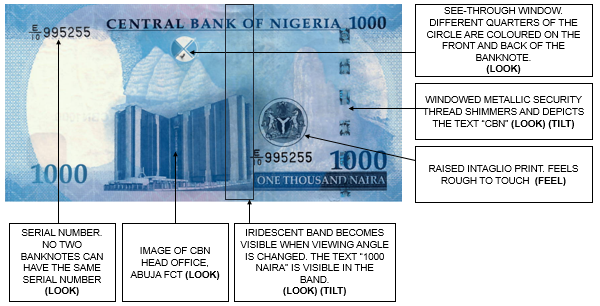
The One Kobo coin has a diameter of 17 mm and a thickness of 1.66 mm. It is round in shape and made of copper-plated steel. On one side, the coin displays the coat of arms of Nigeria, with the inscription 'Federal Republic of Nigeria' written around the top edge and the minting year at the bottom. On the reverse side, the coin shows the denomination '1 kobo' in the centre, along with a representation of two oil wells.
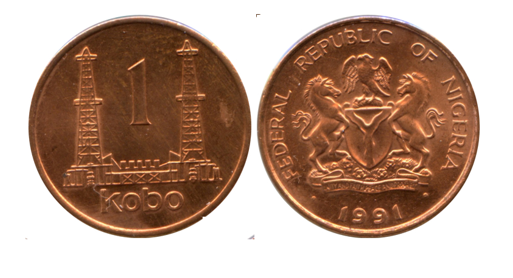
The ten kobo coin has a diameter of 20 mm and a thickness of 1.66 mm. It is round and made of copper-plated steel. One side displays the Coat of Arms of Nigeria, with the inscription 'Federal Republic of Nigeria' around the top edge and the minting year at the bottom. On the reverse side, the coin shows the denomination '10 Kobo' and a representation of two oil palms.
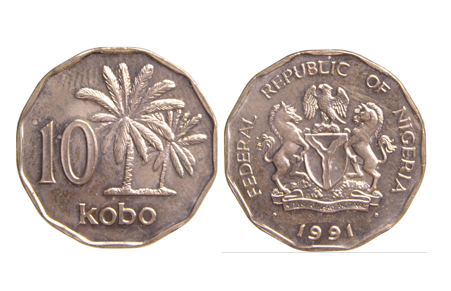
The 50 kobo coin is 24.5 mm in diameter and shaped as a 12-sided polygon. The material used in making it is nickel. On one side, you can see the Nigerian Coat of Arms, the words ‘Federal Republic of Nigeria’ and the year it was minted, engraved. The reverse side has maize cobs and the ‘50 kobo’ value.
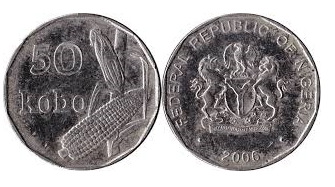
The One Naira coin is 27.5 mm in diameter, round in shape and made out of steel plated with brass. The obverse contains the Nigerian Coat of Arms and the year of issue in the inner circle (brass-coloured) with the inscription ‘Federal Republic of Nigeria’ and ‘CBN’ in the outer circle (steel-coloured). The reverse has a bust of a Nigerian political leader, Herbert Macaulay and his years of life (1864-1946), as well as the value of the coin in letters.
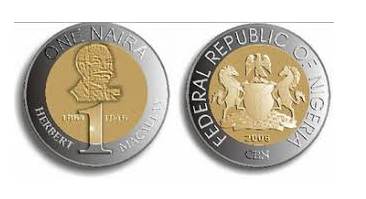
The Two Naira coin is 24.5 mm in diameter, round in shape and made of steel plated with copper. The obverse contains the Nigerian Coat of Arms and the year of issue in the inner circle (brass-coloured) with the inscription ‘Federal Republic of Nigeria’ and ‘CBN’ in the outer circle (steel-coloured). The reverse contains the image of Abuja’s National Assembly Building with a large number "2" on top and the words ‘two Naira’ around it. The coins were released into circulation in 2007.
